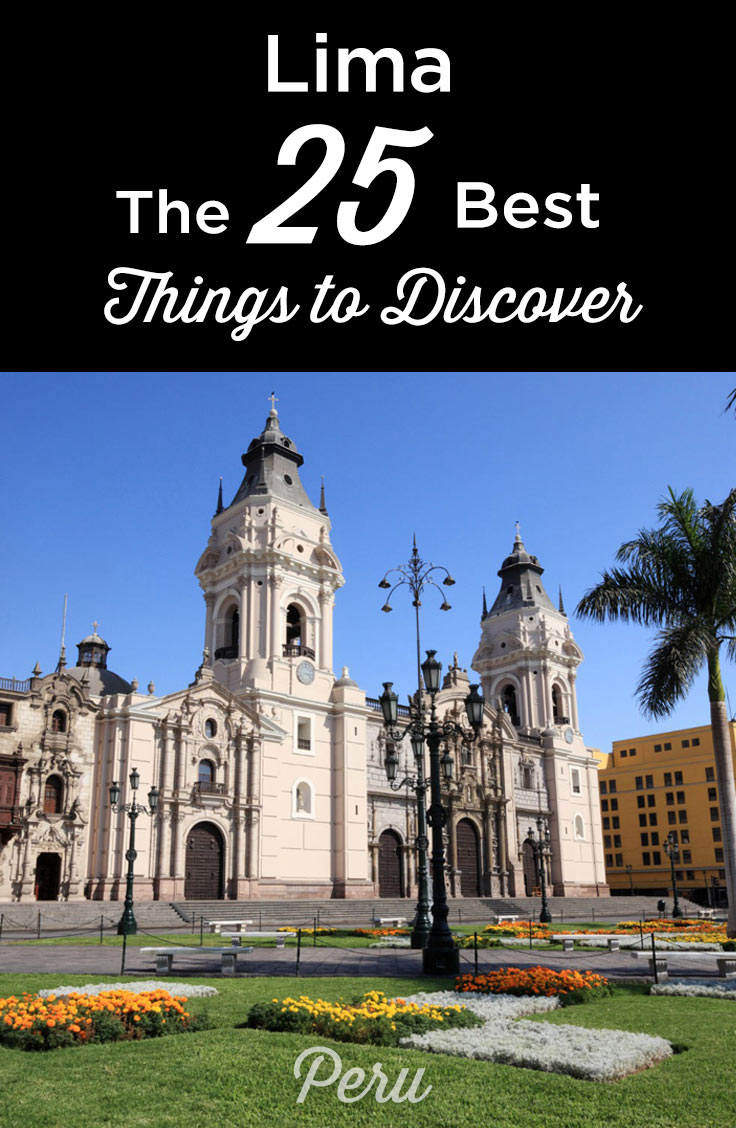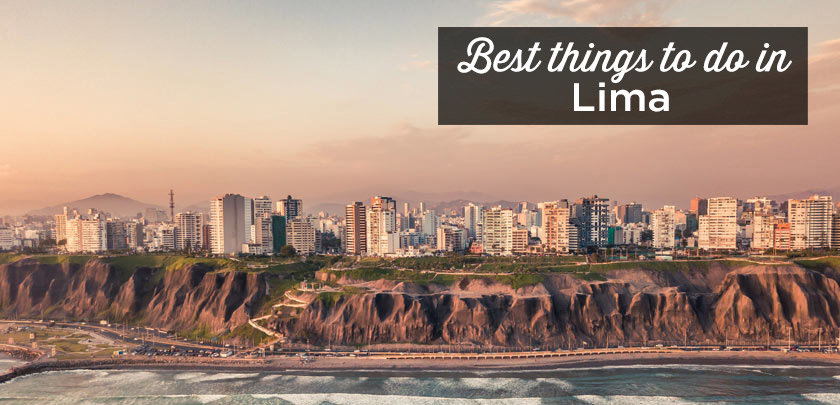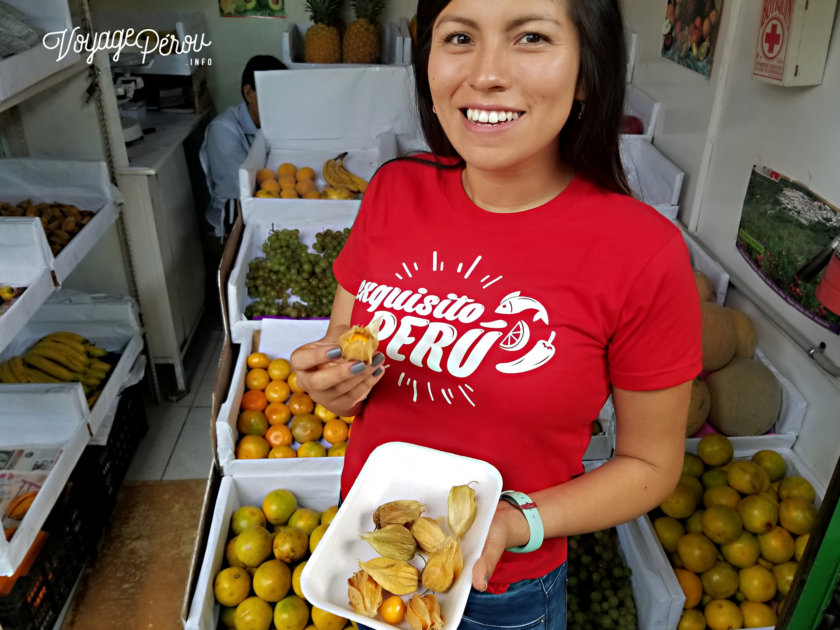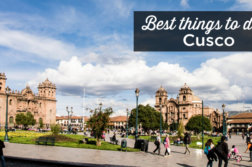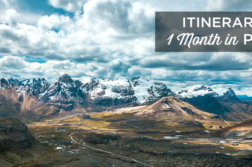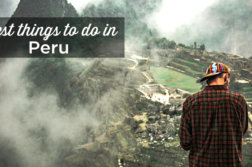The 25 Best Things to Do and See in Lima (Peru)
Planning to visit Peru and starting your trip in Lima?
Great idea!
I lived in Lima for a few years, and it’s one of those cities that really grows on you—especially if you know where to go and what to look for.
Once the most important city in South America during the colonial era, today Lima is known as one of the top food capitals in the world.
But beyond its famous cuisine, it’s also a city of contrasts: pre-Columbian ruins hidden between high-rises, trendy cafés next to traditional markets, and neighborhoods full of street art, design, and creative spaces.
To help you enjoy your stay, I’ve created this complete Lima travel guide—with the 25 best things to do and see, 1 to 3-day itineraries, hotel recommendations for all budgets, and family-friendly ideas too.
You’ll also find my personal tips and honest advice—based on real experience—to help you explore Lima smoothly and stress-free.
What to do in Lima?
Let’s dive in!
Sommaire
- The 25 Best Things to Do and See in Lima (Peru)
- Visiting Lima: The 25 must-see attractions you must see!
- 1. The Main Square
- 2. Aliaga’s House
- 3. The Balconies of Lima
- 4. Santo Domingo Church and Convent
- 5. Basilica and monastery of St. Francis of Assisi
- 6. Plaza San Martin
- 7. Museum of Minerals
- 8. Barrio Chino (Chinatown)
- 9. Central Marketral
- 10. MALI
- 11. Magic Water Circuit (Circuito Mágico del Agua)
- 12. Kennedy Park (Parque Kennedy)
- 13. The Malecón (Oceanfront Promenade)
- 14. Park of Love (Parque del Amor)
- 15. Larcomar
- 16. Huaca Pucllana
- 17. Lima Food Tour
- 18. Barranco
- 19. Larco Museum
- 20. National Museum of Archaeology, Anthropology and History of Peru
- 21. Museum of the Nation
- 22. Gold Museum of Peru (Museo Oro del Perú)
- 23. Presbyterio Maestro Cemetery
- 24. Callao
- 25. Amano Museum
- Visit Lima as a Family
- What to See Near Lima
- Where to stay in Lima
- The best guided tours in Lima: my suggestions
- Is Lima safe?
- How to get to Miraflores or Barranco from the airport?
- How many days are needed to visit Lima?
- When to visit Lima
- Getting around Lima
- Tourist map of Lima
- Book Your Flight at the Best Price
- Rent a Car in Peru
- Traveling to Peru? These articles will help you!
- Visiting Lima: The 25 must-see attractions you must see!
Visiting Lima: The 25 must-see attractions you must see!
1. The Main Square
The Plaza Mayor, also known as the Plaza de Armas, is the heart of Lima and one of the city’s most important landmarks.
- Metropolitan Cathedral of Lima: Built in 1535 on top of an Inca temple and the palace of Prince Sinchi Puma, this impressive cathedral has gone through many changes over time. Today, you’ll find a fascinating mix of styles—baroque, gothic, neoclassical, and romantic. It houses thirteen chapels and the tomb of Francisco Pizarro.
- Archbishop’s Palace: Right next to the cathedral, this beautiful neo-colonial building is known for its iconic wooden balconies. It’s the official residence of the Archbishop of Lima and the headquarters of the Catholic Church in Peru. Inside, there’s also a museum of religious art with pieces dating back to the 16th century.
- Government Palace: This is the seat of the Peruvian government and the official residence of the President. If you’re around at noon, don’t miss the changing of the guard—it’s quite a spectacle!
- Pisco Museum: Despite the name, this isn’t a museum in the traditional sense. It’s a stylish bar specializing in pisco, with a wide selection of cocktails—both classic and creative—using local ingredients. The staff really knows their stuff!
- Chocomuseo: Another spot that’s more of a shop than a museum, but still worth a stop—especially if you love chocolate. You’ll find everything from chocolate bars to cocoa pisco and even jams. There’s also a small display showing the chocolate-making process.
- Bar Cordano: A true Lima institution. Since the early 1900s, this bar has welcomed intellectuals, artists, and politicians. It’s famous for its ham sandwiches, and it’s also a great place to enjoy a pisco sour or chilcano. But more than anything, it’s the authentic, old-school atmosphere that makes it a must-visit.

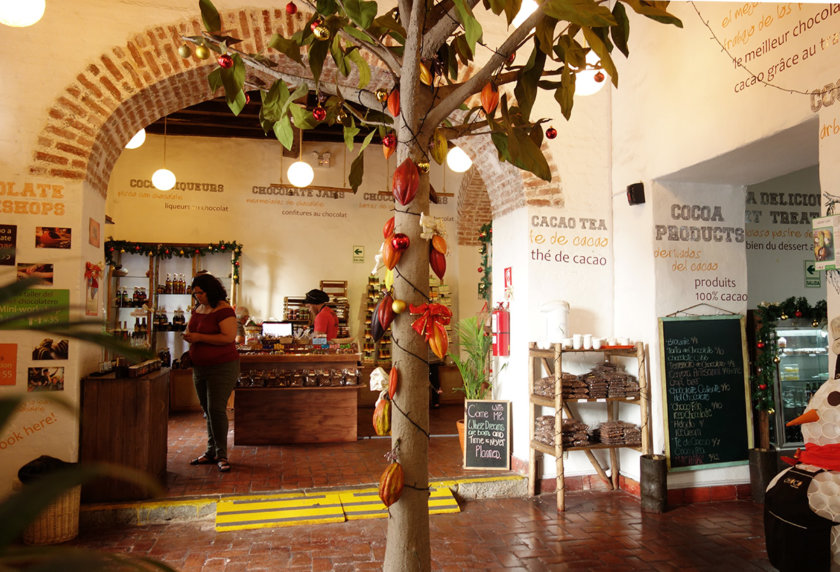
2. Aliaga’s House
One block from the square is the oldest colonial residence in Lima (early 16th century). It was Jerónimo de Aliaga companion in arms of Francisco Pizarro, who had this house built on a piece of land donated by Pizarro and over a pre-Hispanic temple.
It is a magnificent mansion with a lot of presence, large staircases, wooden furniture, French style living room, mirrors and Louis XVI style furniture, as well as a beautiful interior patio.
His descendants still live there and the house can be visited with a previous booking.
Address: Jiron de la Union 224, Lima.
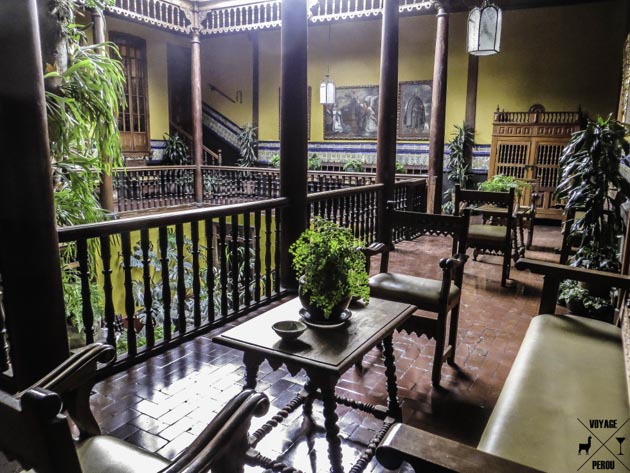
3. The Balconies of Lima
During the Viceroyalty of Peru and the early Republican era, countless wooden balconies were built across the city—becoming a true symbol of Lima’s colonial architecture.
While many have disappeared over time, some of the most beautiful balconies have been preserved thanks to a restoration plan launched in the late 1990s. Today, they’re one of the most unique features of Lima’s historic center.
You’ll see impressive examples around the Plaza Mayor, but two buildings from the Viceroyalty period really stand out:
- Torre Tagle Palace: Just two blocks from the Plaza Mayor, this former residence of the Marquis of Torre Tagle is worth a stop. Its Andalusian baroque façade features two stunning Mudejar-style wooden balconies, delicately carved from cedar and mahogany.
- House of Osambela: Also known as Casa de Oquendo, this is one of the largest colonial houses in Lima. It once belonged to a wealthy merchant who used the top floor to watch his ships arrive at the port. The light blue neoclassical façade with rococo details and its five wooden balconies make it a must-see.
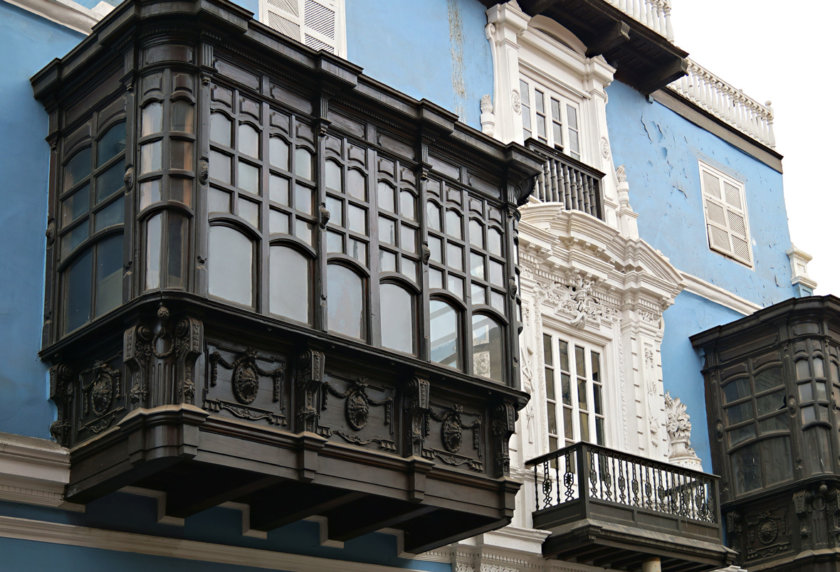
4. Santo Domingo Church and Convent
With its unmistakable pink façade, Santo Domingo is hard to miss—and that’s a good thing, because it’s absolutely one of the must-see landmarks in Lima.
Built in the 16th century on land donated by Francisco Pizarro to Dominican friar Vicente de Valverde, it remains one of the most significant religious complexes in the capital.
Inside, you’ll find the relics of two major Catholic figures in Peru: Saint Martin de Porres and Saint Rose of Lima.
The architecture is impressive, but my favorite part is the peaceful cloister—a serene courtyard filled with plants, offering a moment of calm right in the heart of Lima.
Address: Esquina Jirón Conde de Superunda and Jirón Camaná, Lima.
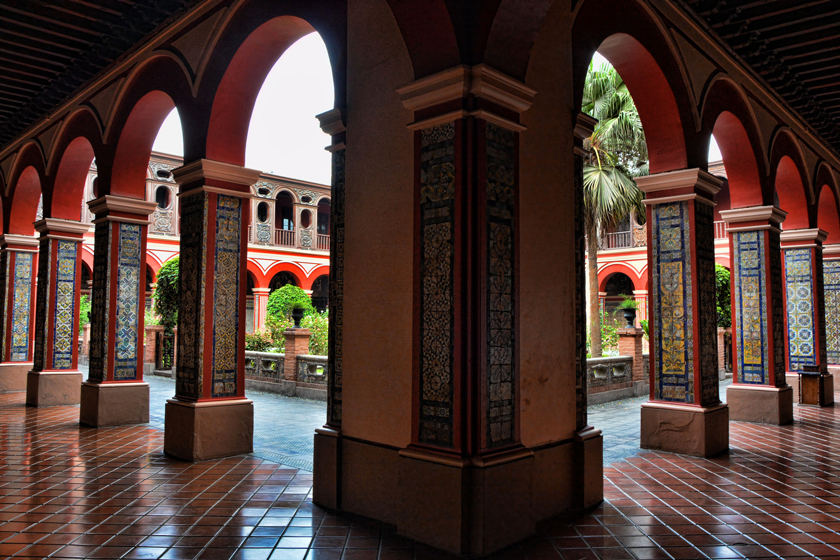
5. Basilica and monastery of St. Francis of Assisi
The Church and Monastery of San Francisco is one of the absolute must-sees in Lima. It’s also one of the most beautiful historic buildings in the city—a true architectural gem in the heart of the capital.
While the church itself can be visited freely, I highly recommend joining a guided tour of the San Francisco Monastery. It’s one of my favorite places to visit in Lima’s historic center.
The visit includes several areas of the monastery, which is still partially inhabited by monks. You’ll walk through cloisters, tiled halls, and quiet courtyards while the guide explains the history and art—including works from the Cusco School and Lima School. Highlights include:
- The refectory (dining room): Here you’ll find fifteen paintings and the most iconic piece in the monastery—a Peruvian version of The Last Supper by Diego de la Puente (17th century), featuring local characters and even a guinea pig as the main dish!
- The library: A stunning space housing around 25,000 books, including some dating back to the 15th century.
- The catacombs: Located in the Crypt of San Francisco, they were used for burials until the early 19th century. It’s one of the most atmospheric (and slightly eerie) parts of the tour.
Address: Plazuela San Francisco, corner of Jirón Ancash and Jirón Lampa, Lima.
Entrance: 15 soles, includes a mandatory guided tour (in Spanish or English).
If you have a sweet tooth, don’t miss a stop at Churros San Francisco (Jirón Lampa 268, open from 1:00 p.m. to 9:30 p.m.). They’re made fresh right in front of you—some of the best churros in Lima!
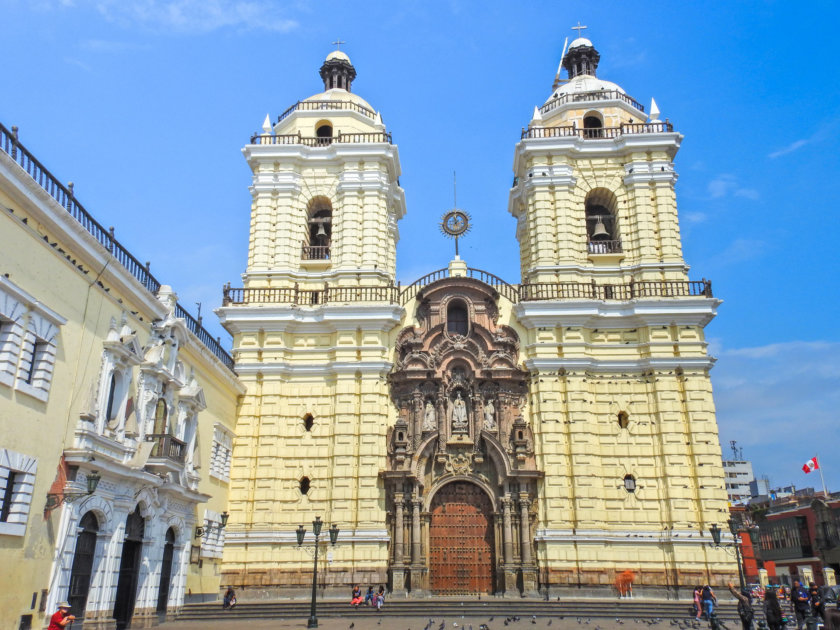
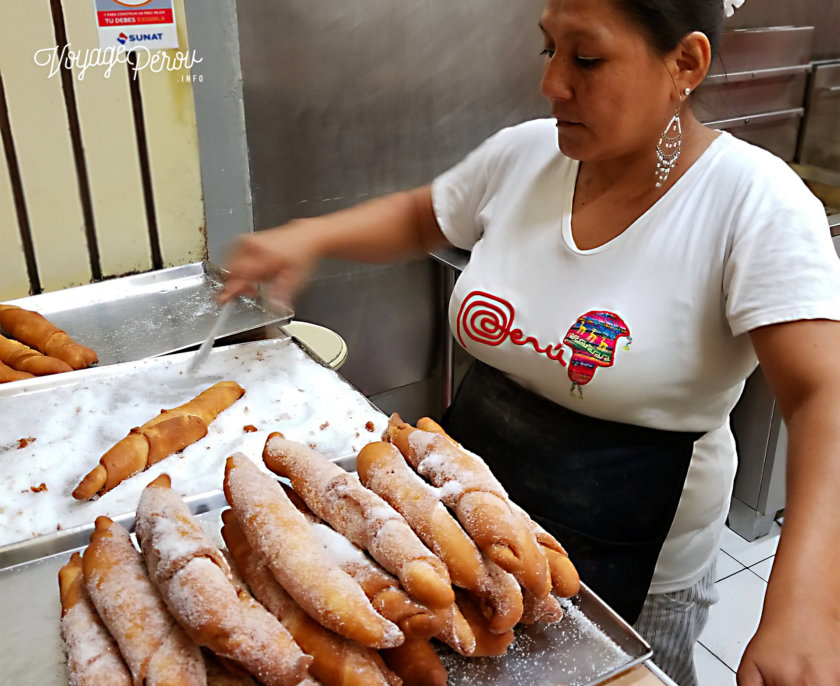
6. Plaza San Martin
San Martin Square is another must-see place to visit in Lima.
It was built in the early 20th century as a tribute to José de San Martín, one of the key figures in Peru’s independence. You’ll easily recognize the square by the imposing equestrian statue of San Martín at its center, surrounded by elegant white neocolonial buildings.
To reach Plaza San Martín from the Plaza de Armas, walk along the wide pedestrian street known as Jirón de la Unión. On the way, make sure to stop at the Church of La Merced, built in the early 17th century. Its Panamanian granite and baroque-style columns make it one of the city’s architectural gems.
Once you arrive at San Martin Square, don’t miss a visit to the iconic Gran Hotel Bolívar. This historic hotel, dating back to the 1920s, is known for its grand lobby—still guarded by an old Ford T—and its classic pisco sour, which you can enjoy right at the bar where many Peruvian celebrities once gathered.
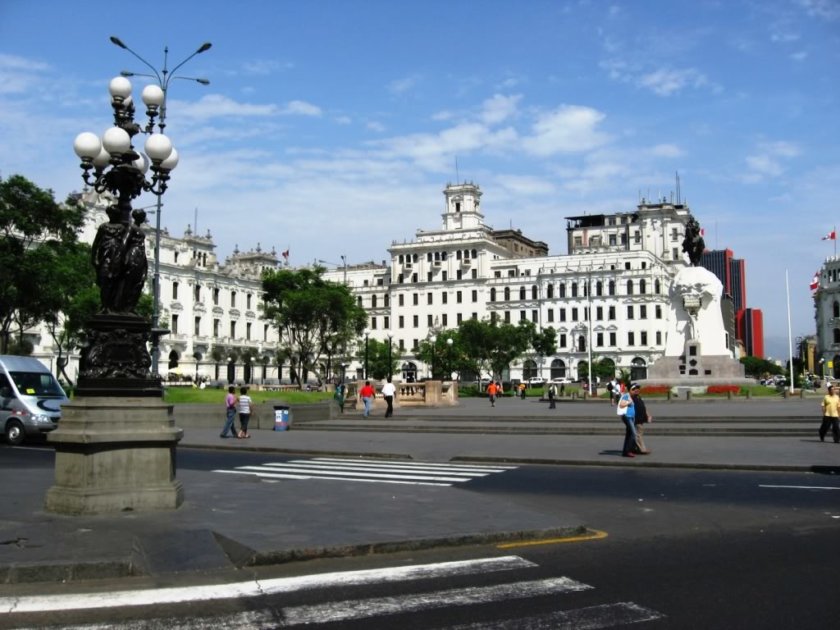
7. Museum of Minerals
If you like unusual places, just a few steps away from the square you will find the Museum of Minerals Andres Castillo.
It is a beautiful restored mansion, Casa Belen, which houses the largest collection of minerals in all of Peru. Don’t miss the collection of phosphorescent minerals in the room specially dedicated to them. A place to visit in Lima that very few people know about!
Address: Jiron de la Union 1030, Lima. Admission 20 soles. Instagram
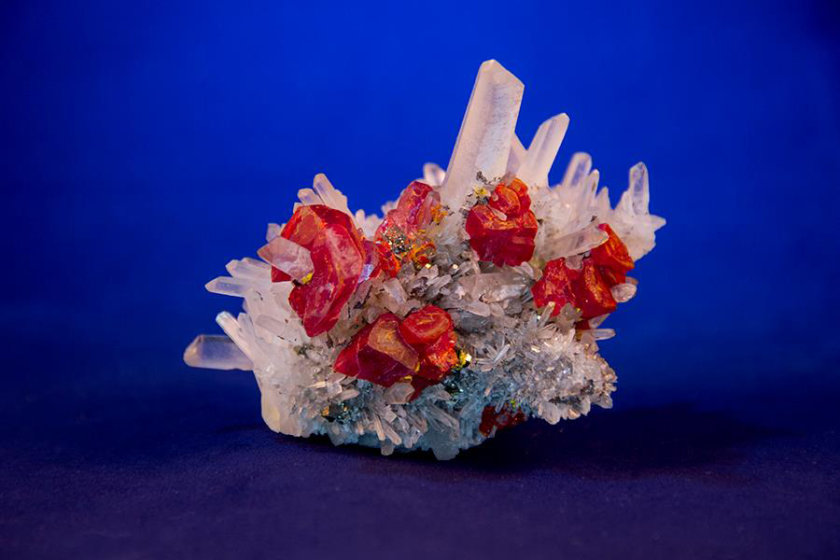
8. Barrio Chino (Chinatown)
Lima’s Chinatown is located exactly next to the historical center, in the district of Barrios Altos.
It should be noted that in Peru, and mainly in Lima, it is estimated that there are more than two million inhabitants of Chinese roots, making it the seventh largest Chinese community in the world outside of China!
Despite all this, Chinatown is not very large, and is mainly centered on a single street, Capon Street. Besides going to its stores and having a nice walk, people go there for one main reason: to eat chifa a fusion of Chinese (mainly Cantonese) and Peruvian cuisine.
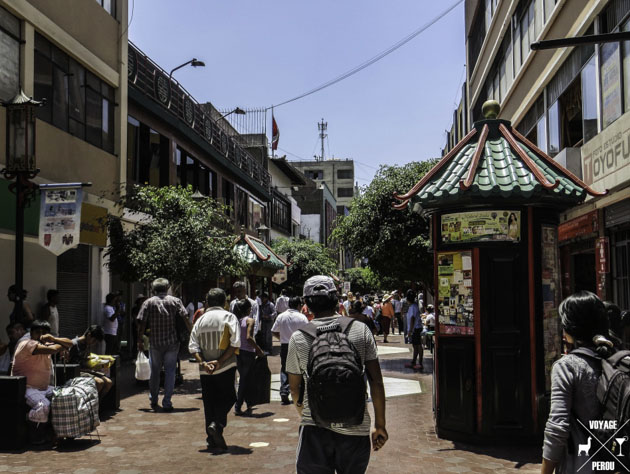
9. Central Marketral
Right next to the lima’s Chinatown is Central Market, a huge market that occupies an entire block. A real chaos where you can find everything.
You can find all the food in the main building: fruits and vegetables, meats of all kinds, fish, seafood, spices, and kiosks that prepare dishes to be consumed on the spot at a very nice price.
Around the building, the streets are occupied by a multitude of stalls where you can find: clothes, kitchen or car accessories, shoes, laptops, books and school supplies, electronics, and even animals!
It is always crowded (so be careful with your belongings), but it is definitely an experience that I recommend you to live when you’re visiting downtown Lima, it’ll be hard to find anything more local!
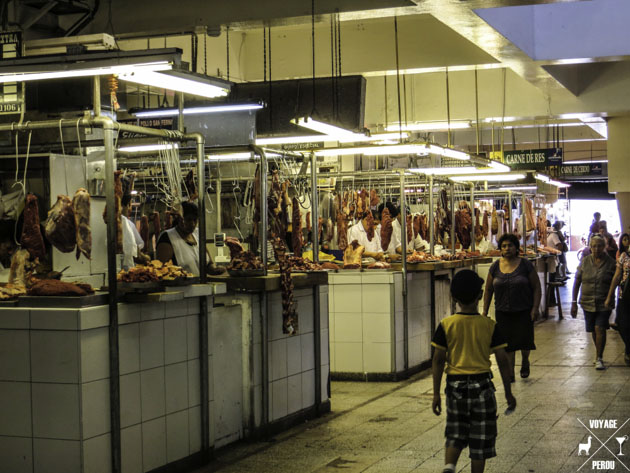
10. MALI
At the entrance of the historic center is the Museum of Art of Lima. Located in a beautiful building in the Parque de la Exposición, it was built for the International Exposition of Lima in 1872.
The museum houses a large collection of Peruvian art covering 3000 years of history spread over 9 rooms, from pre-Columbian cultures to modern times (ceramics, textiles, furniture, paintings, etc.).
You will also find temporary exhibitions of national and international art.
I recommend a visit to the MALI Café, one of the good (and rare) options for a coffee or a snack in the historic center.
Address: Parque de la Exposición, Paseo Colón 125, Lima. Tuesdays to Sundays from 10 am to 7 pm, Saturdays from 10 am to 5 pm. Admission 30 soles. Website
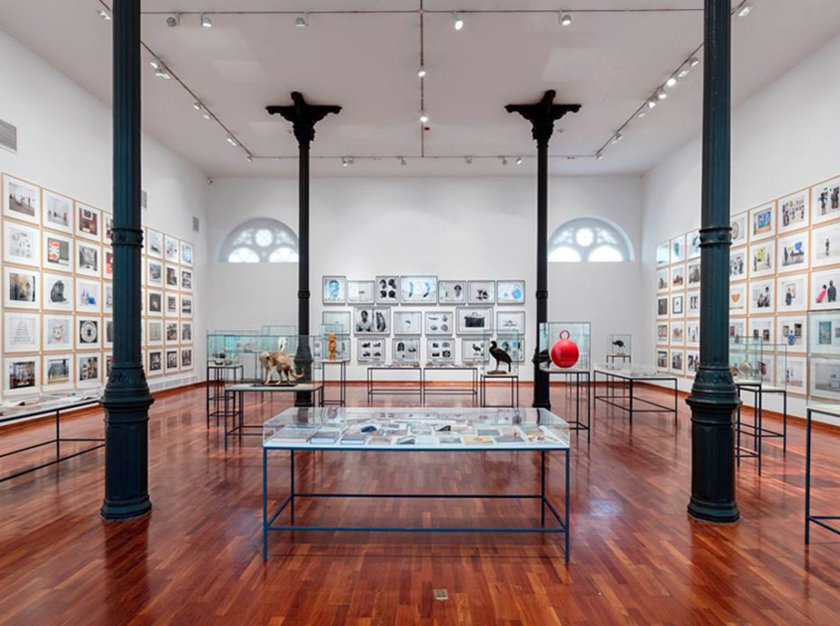
11. Magic Water Circuit (Circuito Mágico del Agua)
The Magic Water Circuit is a park with thirteen interactive fountains, located in Parque de la Reserva. As soon as you arrive, you’ll hear the sound of children laughing and splashing—this is one of Lima’s most popular attractions for families.
But it’s not just for kids—at sunset, the atmosphere turns romantic, with colorful lights and music shows. You’ll see couples strolling hand in hand while the fountains light up around them.
Don’t miss the Fantasy Fountain show (7:30 p.m., 8:10 p.m., and 9:00 p.m.). It’s a beautiful display of lasers, traditional Peruvian dances, and music, all projected onto 90 meters of water jets. Definitely one of the most unique things to do in Lima at night!
Address: Jirón Madre de Dios, Lima.
Admission: 5 soles.
Opening hours: Tuesday to Sunday, 3:00 p.m. to 10:30 p.m.
You can also book a guided tour of the Magic Water Circuit, including hotel pickup in Miraflores or San Isidro:
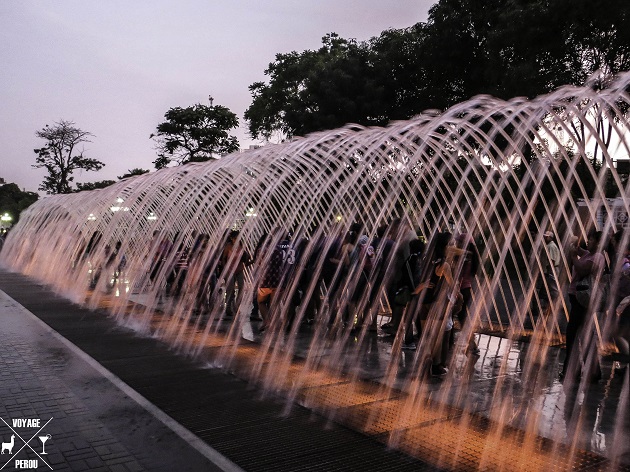
12. Kennedy Park (Parque Kennedy)
Parque Kennedy is the central park of Miraflores, one of the liveliest neighborhoods in Lima. It’s surrounded by shops, cafés, and main avenues like Diagonal, José Larco, and José Pardo.
The park itself isn’t huge, but it’s always buzzing with life. You’ll find the beautiful Parroquia de la Virgen Milagrosa, local artists selling paintings, and several street food stalls offering churros, sandwiches, arroz con leche (sweet rice pudding), and picarones—fritters made with sweet potato and pumpkin.
Personally, I highly recommend trying the picarones. They’re one of the best traditional street foods in Lima. Just know that the portions are generous—so it’s a great snack to share!
If you’re into craft beer, cross the street to Nuevo Mundo (Calle Manuel Bonilla 103). It’s one of the top spots in the city to sample a variety of Peruvian craft beers from local breweries.
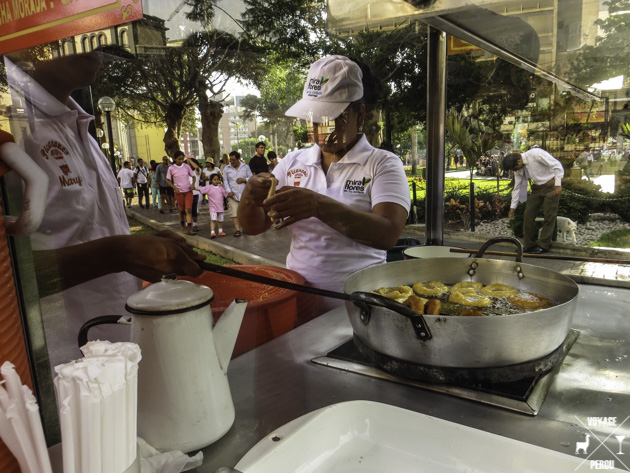
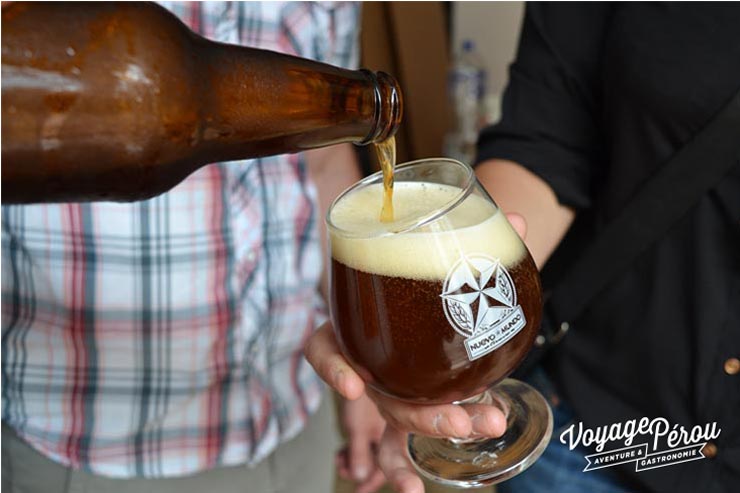
13. The Malecón (Oceanfront Promenade)
The Malecón is a scenic clifftop promenade overlooking the Pacific Ocean, stretching between the districts of Miraflores and Barranco. It’s one of the most pleasant places to walk in Lima, with panoramic views of the coast, peaceful green spaces, and plenty of fresh air.
It’s especially beautiful in the late afternoon—watching the sunset from the Malecón is a must-do in Lima. Locals love coming here to run, walk their dogs, or cycle along the dedicated bike path that runs the length of the promenade.
If you want to take a break with a view, there are a couple of lovely cafés along the way: Buenavista Café and The French Kiss. The latter was opened by Samantha, a French expat living in Lima, and it’s become one of my favorite places in the city.
Her menu features delicious sweet and savory crepes (the tomato and cheese one is simple but excellent!), fresh orange juice, and a really good cappuccino—all served with a view of the ocean.

14. Park of Love (Parque del Amor)
This small oceanfront park along the Malecón is a favorite spot for couples and families alike. Parque del Amor, or “Park of Love,” is easy to recognize thanks to its iconic statue El Beso (“The Kiss”) by Peruvian sculptor Víctor Delfín, which shows two lovers locked in an embrace.
The park also features colorful Gaudí-style mosaic benches decorated with romantic phrases in Spanish, adding to its unique charm.
It’s undoubtedly one of the most photographed places in Lima, especially at sunset. And on Valentine’s Day (February 14), the park fills with locals celebrating love in all its forms.

15. Larcomar
Along the Malecón, right at the intersection with Avenida Larco, you’ll find Larcomar—one of Lima’s most popular tourist attractions.
It’s a three-level shopping mall built directly into the cliffside, overlooking the Pacific Ocean. Inside, you’ll find a wide range of stores, a movie theater, a bookstore, and many restaurants with oceanview terraces—perfect for enjoying a drink or a meal with a view.
At the entrance of Larcomar, there’s a tourist information kiosk and even a bicycle rental service if you’d like to ride along the scenic Costa Verde.
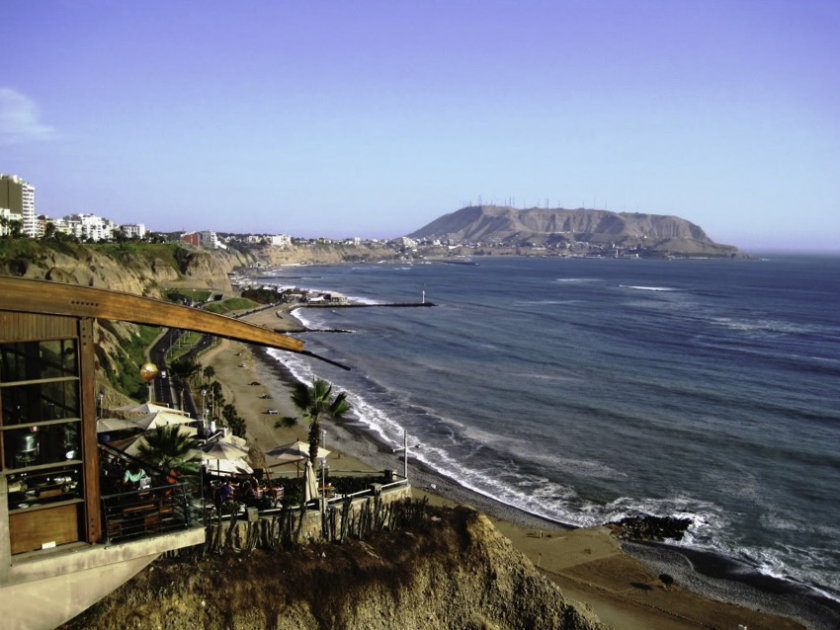
16. Huaca Pucllana
The Huaca Pucllana is undoubtedly a site to see in Lima for archeology and history lovers.
This pre-Columbian archaeological site from the 1600’s is located in the heart of Miraflores, but few travelers know about it. It is true that one does not expect to find a pyramid in the middle of a residential area, and that is probably why its excavation began only thirty years ago.
It was a great religious and administrative center where four civilizations succeeded one another: Yschma, Lima, Wari and Inca. The guided tour shows the different structures and ceremonial practices (sacrifices and mummies) of each culture.
In the plaza there is also a vegetable garden, llamas and alpacas, as well as a restaurant with a beautiful terrace that offers an impressive view of the pyramid. At night, when it is illuminated, believe me it is worth a look.
Address: Calle General Borgoño 8, Miraflores, Lima. Guided visit 15 soles. Open Mondays, Wednesdays, Fridays, Saturdays and Sundays from 9:00 to 16:15 hrs.
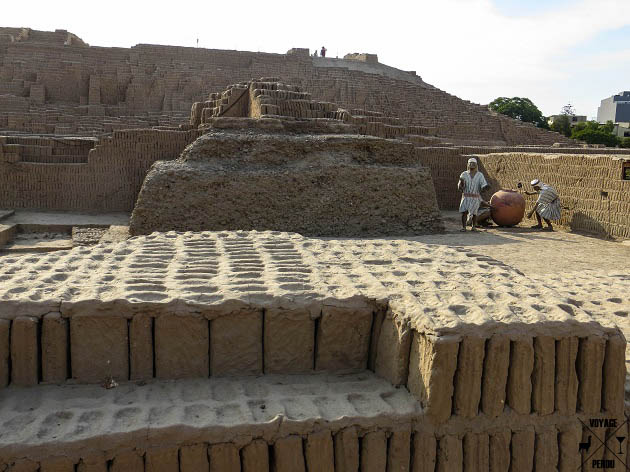
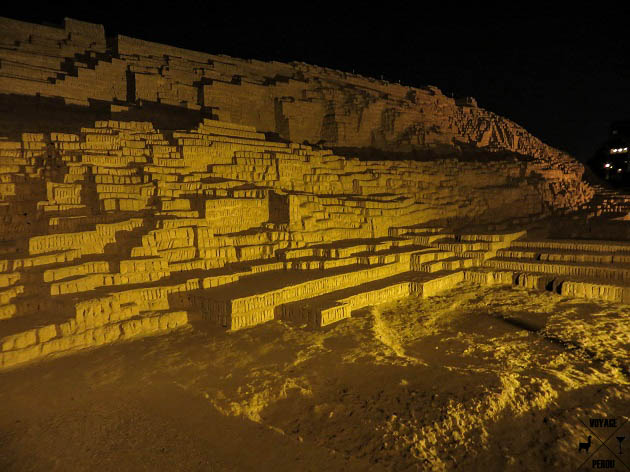
17. Lima Food Tour
This is, by far, my favorite activity to do in Lima!
Peru has been named the best gastronomic destination in the world by the World Travel Awards for seven consecutive years. Thanks to its incredible diversity of products and its eleven different climates—from the desert to the Andes to the Amazon—Peru offers one of the richest cuisines in the world.
Naturally, Lima brings together products and culinary traditions from all over the country, making it a true paradise for food lovers.
I had the chance to try two very different food tours in Lima, and I highly recommend both:
- Downtown food tour: Walk through the historic center of Lima and discover its most authentic side through traditional taverns (many still unknown to tourists) and some delicious street food.
- Barranco food tour: A completely different vibe! This tour takes you through the colorful, bohemian district of Barranco and lets you taste a wide variety of Peruvian classics in a relaxed, creative setting.
18. Barranco
Barranco is Lima’s bohemian, artistic, and most colorful neighborhood—right next to Miraflores and easily one of the most interesting places to visit in Lima.
Once a seaside retreat for wealthy families looking to escape the chaos of the city, it still preserves traces of its golden age. You’ll see grand old mansions, known as casonas, many of which have been converted into boutique hotels, art galleries, or restaurants—while others remain quietly abandoned, adding to the charm.
Among the highlights are the Bridge of Sighs and the Bajada de Baños, a scenic walkway that leads down to the beach. These are also some of the best photo spots in Lima, especially with the street art murals and urban installations you’ll find along the way.
In fact, Barranco has the highest concentration of street art in Lima, with vibrant murals by both Peruvian and international artists. It’s a must for creatives and photographers!
There are also two museums worth visiting while you’re here:
- Pedro de Osma Museum: A beautiful mansion with large gardens housing an impressive collection of Peruvian art from the 16th to 19th centuries. Address: Pedro de Osma 421, Barranco.
- MATE (Mario Testino Museum): Located right next door, this museum is dedicated to the famous Peruvian fashion photographer. Address: Pedro de Osma 409, Barranco. Currently closed.
Barranco is also the best place in Lima for a drink. Here are some of my favorite spots:
- Ayahuasca Bar (Av. San Martin 130) and Victoria Bar (Av. Pedro de Osma 135): Two stylish bars in old mansions with a lively, youthful vibe.
- Juanito (Miguel Grau 270) and Piselli (28 De Julio 297): Traditional taverns and true Barranco classics—authentic and full of character.
- La Noche (Sánchez Carrión 199): A great spot to listen to live music and discover local Peruvian artists.
- Help! (Catalino Miranda 158) and Sargento Pimienta (Av. Francisco Bolognesi 757): Two of the top places to dance in Lima, especially for fans of rock and indie vibes.
And for an original cultural night in Lima, try a traditional peña—a small venue where locals gather to enjoy live criolla music and dancing. My top recommendations are La Oficina and Don Porfirio.
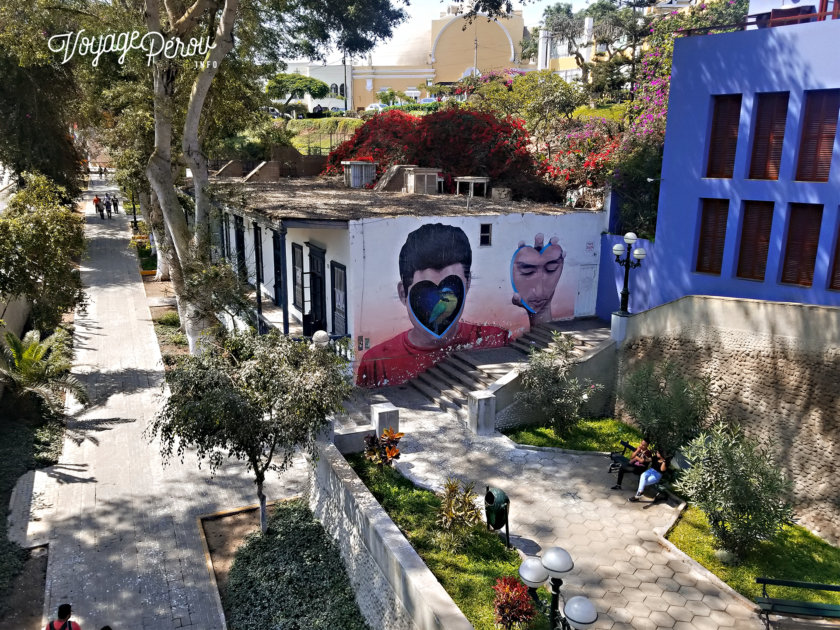
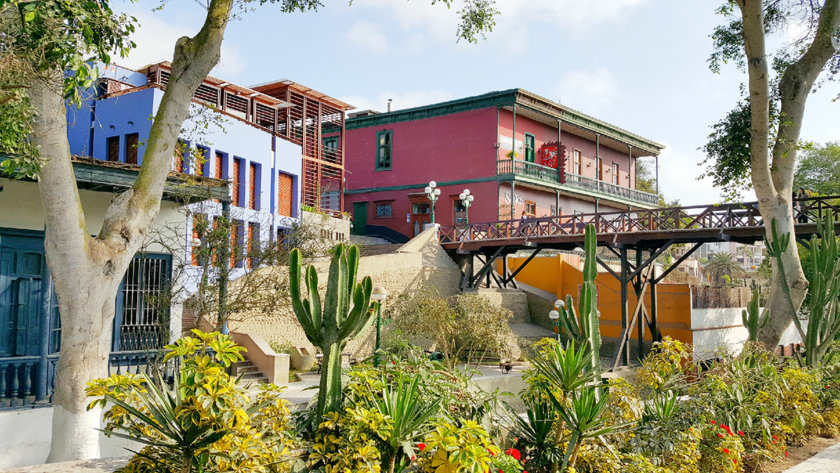
19. Larco Museum
The Larco Museum is by far my favorite museum in Lima—and a must-see for anyone interested in Peru’s rich history.
It houses an exceptional collection of pre-Columbian artifacts, including the largest collection of pre-Columbian erotic art in the world. The museum was founded by Rafael Larco Hoyle in 1923 and spans more than 5,000 years of history.
Fun fact: Visitors can access the museum’s storage and reserves, where around 30,000 additional archaeological pieces are displayed—something quite rare and fascinating for a museum visit.
Everything is set inside an 18th-century hacienda with beautifully kept flower gardens. There’s also a cozy café-restaurant with a lovely terrace. It’s the perfect spot to enjoy a coffee or drink after your visit. At night, the museum becomes especially romantic thanks to its elegant lighting—one of the best date spots in Lima!
Address: Av. Simon Bolivar 1515, Pueblo Libre, Lima. Mon-Sun 9 a.m. to 10 p.m. Admission 35 soles. Website

20. National Museum of Archaeology, Anthropology and History of Peru
This is Peru’s very first museum—and for the first hundred years of the Republic, it was actually the only one in the entire country. Today, it holds a stunning collection of over 300,000 artifacts covering more than 12,000 years of history, from pre-Hispanic civilizations to colonial and republican times.
Inside, you’ll get to explore the evolution of ceramics, textiles, and metallurgy, as well as learn about major cultural and religious centers like Sechín and Chavín de Huántar.
The museum showcases the richness of ancient Peruvian cultures from all across the country, including Paracas, Nazca, Huari, Chancay, Chimú/Lambayeque, Tiwanaku, Chincha, Churajón, Chuquibamba, Chiribaya, and Ychsma, plus a variety of Amazonian communities.
Toward the end of the exhibit, you’ll walk through the story of Peru’s transformation—from the Spanish conquest to colonial rule, and eventually, the struggle for Independence and the birth of the Republic.
Don’t miss: the Inca Empire section, featuring models of Machu Picchu, Wiñay Wayna, and the Coricancha Temple in Cusco—an absolute highlight for history lovers!
Address: Plaza Bolivar, Pueblo Libre, Lima. Admission 20 soles Mon-Sun 8:45 to 17 h. Website
If you have time, I recommend you to go to the Old Queirolo Tavern located in a corner of the museum. It is a traditional tavern of Lima, and a true institution of the capital. Inaugurated in 1870 by the same owners of the famous pisco Queirolo is the ideal place to have a pisco chilcano and a and a chicharrón (pork) sandwich.

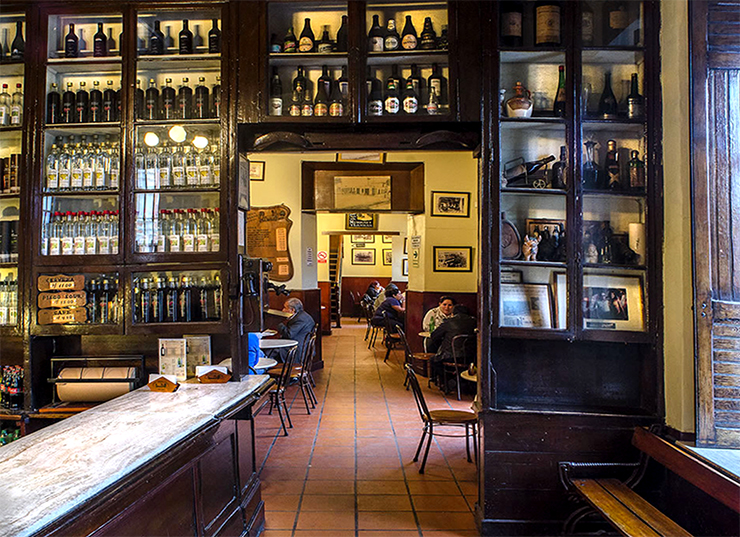
21. Museum of the Nation
This free museum is one of the largest in Peru, and is located in the same building that houses the offices of the Ministry of Culture.
There are over 12,500 pieces from pre-Hispanic times (metals, textiles and ceramics, from the Paracas, Mochica, Wari, Lima cultures), but also 2500 pieces from colonial and republican times.
The last floor is dedicated to the years of political violence (1980s and 1990s), when the Shining Path and the Peruvian State were in conflict.
Address: Av. Javier Prado Este 2465, San Borja, Lima. Free admission, Tue-Sun from 9 a.m. to 5 p.m.
Important note: if you are interested in the subject of terrorism in Peru, I recommend you the LUM (Place of Memory, Tolerance and Social Inclusion) in Miraflores, which is totally dedicated to it; very well done, complete and free!
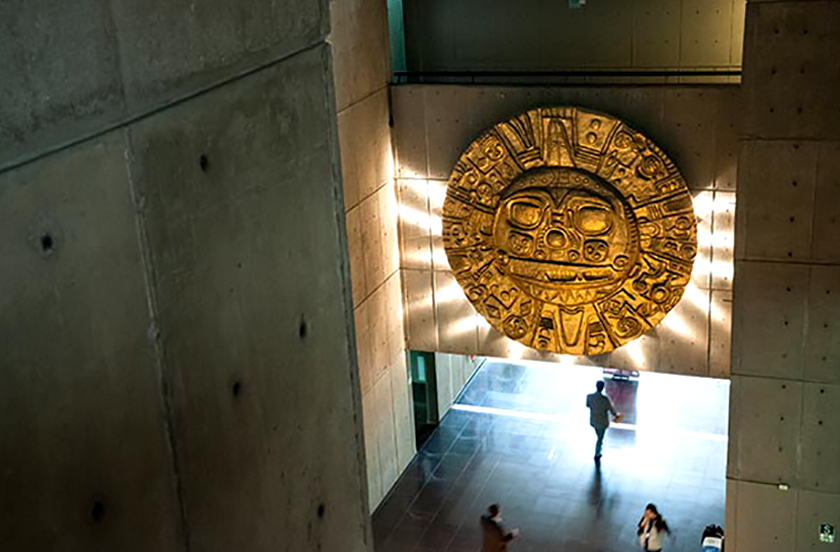
22. Gold Museum of Peru (Museo Oro del Perú)
Located in the heart of a residential area in Surco, the Gold Museum of Peru is quite an unexpected find—both for its discreet location and the size of its collection.
The museum holds a massive collection of pre-Columbian gold, silver, copper, and precious stones, including jewelry, funerary masks, crowns, ceremonial mugs, and sacred knives. There’s also an extensive section dedicated to weapons and military uniforms from around the world.
The only downside is the layout: the displays are somewhat crowded and the information isn’t always clearly presented, so it can feel a bit overwhelming. Still, it’s a fascinating place for anyone interested in ancient craftsmanship and military history.
I only had two hours to explore it—and even rushing, I barely scratched the surface. Ideally, plan for three to four hours if you want to see everything at a more relaxed pace.
- Address: Jr. Alonso de Molina 1100, Santiago de Surco, Lima.
- Admission: 33 soles
- Hours: Daily from 10:30 a.m. to 6:00 p.m.
- Official Website
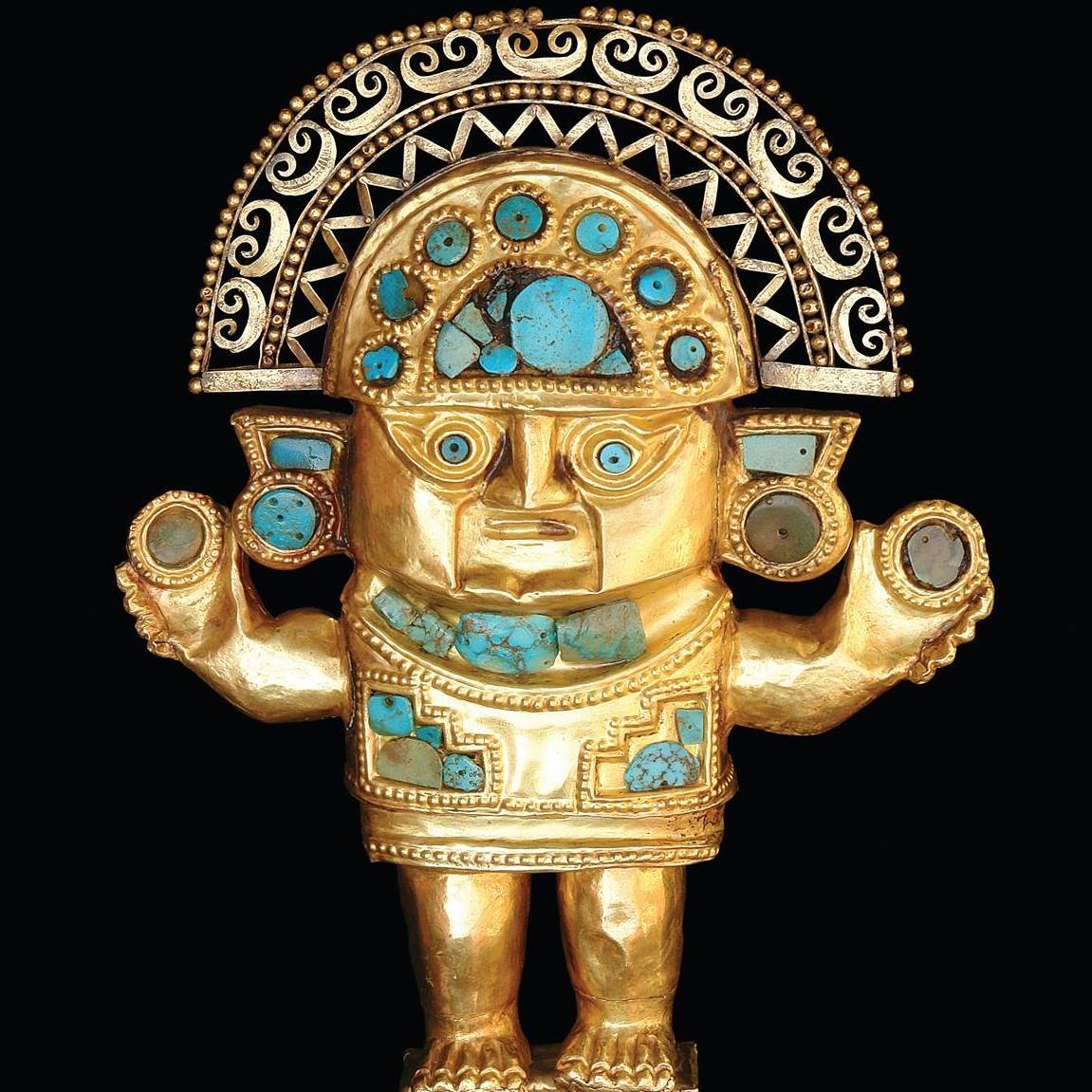
23. Presbyterio Maestro Cemetery
Not only is it the oldest cemetery in Lima (1808), but it is also considered one of the most beautiful in Latin America.
It currently houses 766 funerary monuments and more than 200,000 corpses, including many historical figures of Peru (heroes of the War of the Pacific who rest in the Crypt of Heroes: presidents, writers, painters, singers, etc.). Needless to say, the architecture of the monuments is magnificent!
Across the street is The Angel Cemetery inaugurated in 1959, due to the Presbítero Maestro reaching its maximum capacity. The design of the burial niches at El Angel is much more sober and it is also a more popular cemetery.
There you can find great athletes, artists, writers, politicians, etc. I was surprised to meet in one of its alleyways a musician who offered his services. In this way I learned that visits to loved ones in the cemetery can be accompanied by music, food and even a beer.
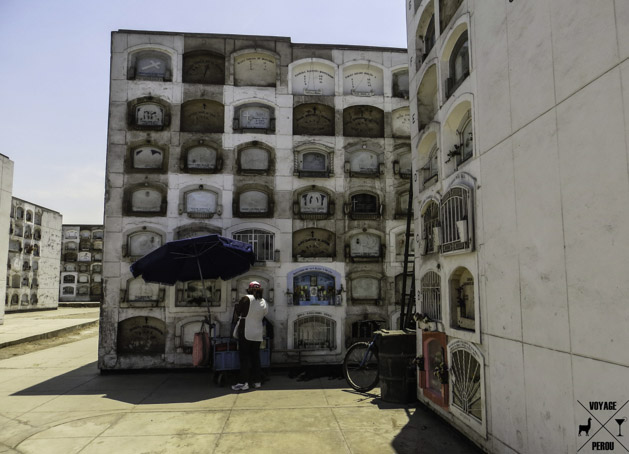
To get to know another impressive cemetery with a completely different style, you have to go to the Nueva Esperanza Cemetery.
Two million souls (so it is said) rest here, making it the second largest cemetery in the world and the largest in the Americas.
Because the arid hills are dotted with a thousands of multicolored tombs and mausoleums, the scenery is breathtaking.
You cannot miss to visit one of the small chapels of the cemetery, as this will allow you to understand the religious syncretism typical of Latin America, that mixes Catholic elements (the virgin, the cross, etc.) and Inca Rituals.
Important: as the cemetery is located in Villa María del Triunfo, a disadvantaged area of Lima it is best to go there by taxi only, a cab recommended by someone you trust or with a with a guide as I did.
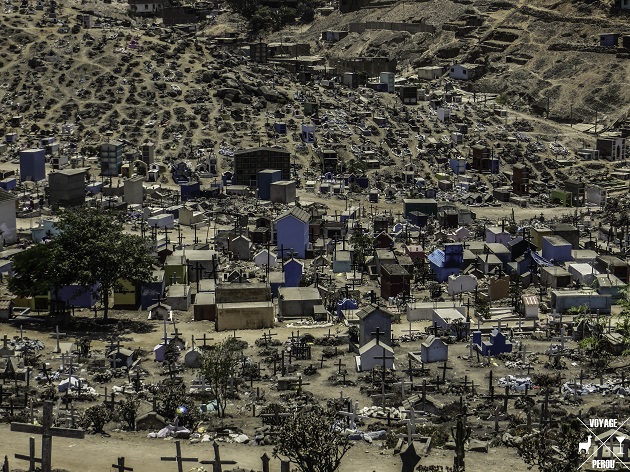
24. Callao
Callao is one of the many areas worth exploring near Lima. It’s home to the Jorge Chávez International Airport and Peru’s main seaport, which played a major role in trade during colonial times.
That said, Callao has a mixed reputation when it comes to safety. It’s important to stick to well-known areas and avoid wandering through unfamiliar streets. I strongly recommend using a taxi app like Uber to get there and back (promo code: nmtobx).
- La Punta: A peaceful seaside neighborhood known for its charming streets, colorful houses, and great ceviche. It’s a lovely spot to enjoy the ocean breeze. You can also visit the Real Felipe Fortress and its museum to learn more about the area’s colonial history.
- Monumental Callao: A revitalized cultural hub filled with over 60 murals by Peruvian and international artists, as well as galleries, cafés, concept stores, and restaurants. It’s one of the most vibrant urban art destinations in Lima. Official website
- Palomino Islands: Just off the coast of Callao, this natural reserve is home to a colony of around 5,000 sea lions. The 4-hour boat tour also passes by San Lorenzo and Frontón Islands, and includes a 50-minute swim with the sea lions (wetsuits provided—yes, the water is cold!). The trip ends with a stop at the Cavinzas Islands, where you can spot Humboldt penguins.
Only four companies are authorized to offer this tour: T&T Turismo y Servicios, Ecocruceros, Mar Adentro, and Buceo Técnico del Perú.
You can book a responsible Palomino Islands tour here:
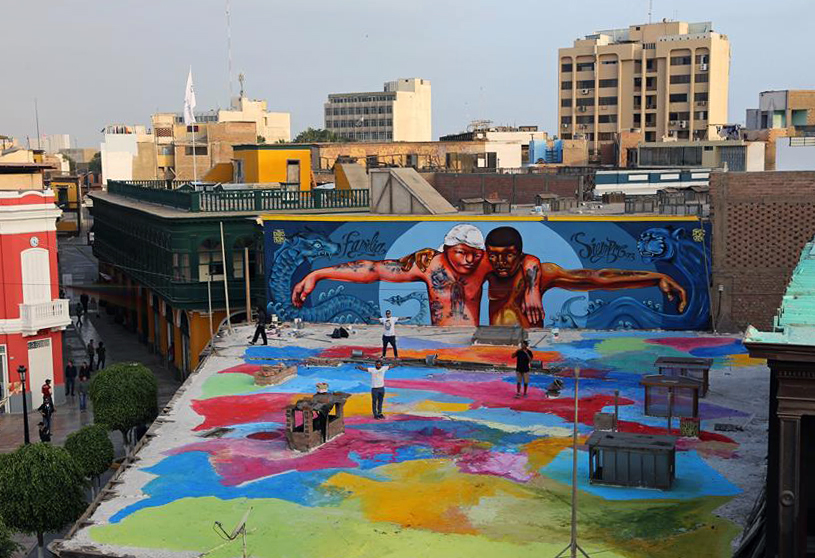
25. Amano Museum
It is a museum in Miraflores (even less known by travelers than Huaca Pucllana) that houses one of the most important collections of pre-Columbian textiles in the world.
There are a total of 460 textile pieces from the Chavin, Paracas, Nasca, Mochica, Huari, Sihuas, Lambayeque, Chimu, Chancay, Chuquibamba and Inca cultures.
It is the perfect opportunity to learn more about the history of textile development in Peru as well as the utensils, the different fibers and natural products used to dye the fabrics.
Address: Calle Retiro 160, Miraflores, Lima. Admission 35 soles, Tue-Sun from 10 am to 5 pm. Website
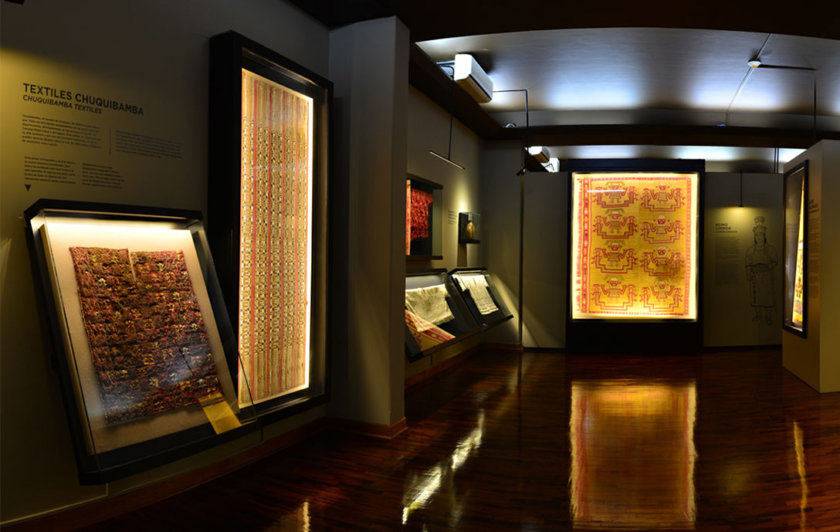
Visit Lima as a Family
Looking for what to do in Lima with your family? Here are my top three recommendations—fun, educational, and perfect for all ages:
- ChocoMuseo: Who doesn’t love chocolate? In this hands-on chocolate-making workshop, you’ll create your own chocolate popsicle from start to finish using ingredients of your choice. It’s also a great opportunity to learn about Peruvian cacao and sample delicious chocolate products. There are two locations: one in Miraflores and another near the Plaza de Armas in downtown Lima. Website
- Magic Water Circuit: This nighttime attraction features colorful illuminated fountains in various shapes and patterns. Some are interactive, and kids especially love running through them. A great way to cool off and have fun after dark!
- La Tarumba: A socially driven company offering circus, music, and theater shows of excellent quality. They also run workshops for children. If you’re in town during one of their shows, don’t miss it! Website
What to See Near Lima
In Peru, distances between sites are often long—and Lima is no exception. The city is massive, and just getting out of it can take time.
Avoid rush hour when planning a day trip from Lima. Trust me—Lima traffic is no joke!
Pachacámac
Pachacámac is a district about 18 miles from Lima, popular with locals on weekends for its open-air restaurants and shows featuring Peruvian Paso horses and traditional dancing.
But the main reason to visit is the Pachacámac archaeological site—a place I still find incredibly underrated, considering it was one of the most sacred Inca sites.
Used as a major religious, commercial, and administrative center from 200 B.C. until the 16th century, it features over 50 structures spread across 460 hectares, including pyramids and temples.
The site was dedicated to the god Pachacámac, considered one of the most powerful (and feared) deities of the time. Thousands of pilgrims came here each year.
- Admission: 20 soles. Hours: Tue–Sat: 9:00 a.m. to 4:00 p.m., Sun: 9:00 a.m. to 3:00 p.m. Official Website
- Visiting Pachacámac: Since it’s located outside the city, I highly recommend taking a guided tour that includes round-trip transportation from your hotel in Lima.
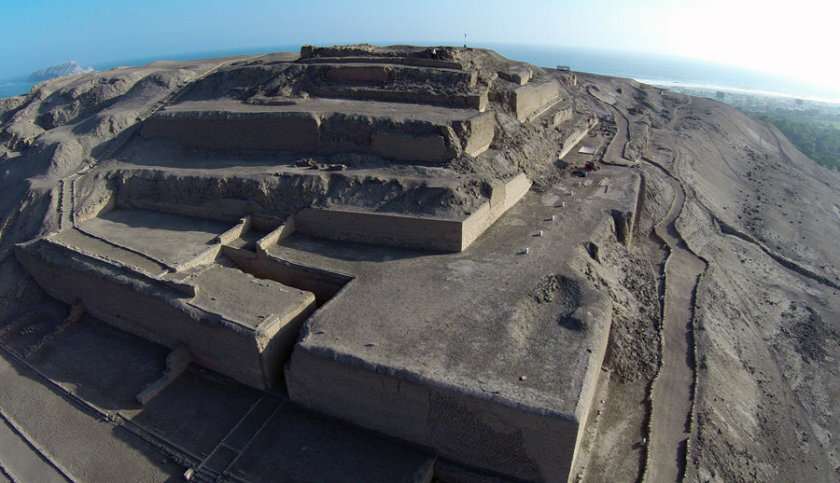
Lomas de Lachay
One of my favorites in Lima! The Lomas de Lachay National Reserve has a surprising microclimate. The area is covered with fog and unexpected green vegetation, which surprises us in the middle of a coastal desert. You get the feeling of walking on the set of a Tim Burton movie.
There are several trails on the site: Zorro (20 min, 1 mile), Tara (1h, 2 miles) and Partridge (2h, 3 miles), all easy, but beware! You can only enjoy this natural spectacle from June to October, the rest of the year the place is very dry and not worth a visit.

Lomas de Lúcumo
Located in Pachacamac, the Lomas de Lucumo offers the same type of ecosystem as the Lomas de Lachay. The hills are covered with fog and offer another strange, magnificent and unexpected green landscape near desert Lima.
You can rappel and climb, but I was perfectly satisfied with just hiking along its small trails.
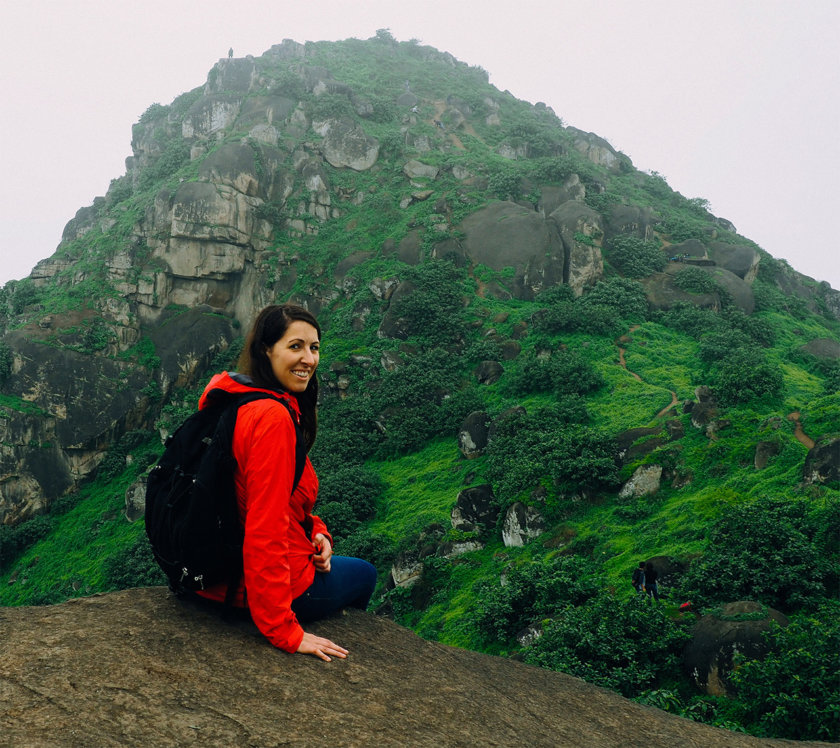
Where to stay in Lima
For these two days, I recommend staying in Miraflores or Barranco, which are safe and well-located neighborhoods:
- Pariwana Hostel Lima: a very friendly youth hostel in the heart of Miraflores. Clean rooms, relaxed vibe, good Wi-Fi, with a restaurant, bar, and rooftop terrace. Dorm bed from only $13 USD and $50 USD for a private room!
- Casita Libertad Homestay: a small house located on a quiet and safe street in the Barranco neighborhood. Cozy atmosphere, very clean, with access to a fully equipped kitchen. Room from only $29 USD per night.
- Casa Andina: a 3-star hotel in Miraflores offering one of the best value-for-money stays in Lima. Modern hotel, recently renovated, with excellent service and an on-site restaurant. Buffet breakfast included, from $87 USD per night.
- Courtyard Lima Miraflores: a modern 4-star hotel perfectly located just steps from Kennedy Park. Comfortable and bright rooms, with a gym and a café-restaurant. From $165 USD per night.
The best guided tours in Lima: my suggestions
If you have little time to visit Lima or you don’t feel like taking care of the organization of your trip, I recommend these Lima tours:
1. A guided walking tour of Lima to discover the attractions of the historic center. The tour includes the famous San Francisco monastery and its catacombs, with pick up at your hotel:
2. A bike tour through Miraflores, Barranco and Chorrillos to see the most beautiful corners of Lima:
3. Marvel at the Magic Water Circuit and typical Peruvian dances at the Parque de la Reserva (a place I love!) Enjoy a local dinner and Peruvian Paso horse show.
Is Lima safe?
Lima, like many big cities, requires a bit of caution—especially when it comes to your personal belongings. Areas like San Isidro, Miraflores, and Barranco are generally safe and popular with travelers, while Downtown Lima can feel less secure, especially at night.
I lived in Lima for four years and never had any issues—but I was always careful. I avoided empty streets after dark, stayed alert in crowds, and kept my valuables close.
Pickpocketing can happen quickly, so staying aware is key. Follow a few basic safety tips, and you should have no trouble enjoying everything the city has to offer:
- Dress simply: no need to draw attention to yourself. It is best to leave valuable jewelry, brand name items, large cameras, etc. at the hotel.
- Always keep an eye on your bag: many people place their bag behind or under their chair in restaurants, a big mistake!
- Avoid walking at night: and if you do, stay in the axis Plaza de Armas – Jiron de la Univn – Plaza San Martin, and do not go through small streets.
- Never take a street cab at night: always use an app such as Uber, Easy Taxi, Beat, etc.
How to get to Miraflores or Barranco from the airport?
This is a very important issue because Jorge Chavez airport is located in Callao, a not very safe area of Lima.
I recommend you not to leave the airport to take a bus or a cab from the street, even during the day.
You have several safe transfer options between the airport and your hotel: an official airport cab (you will find Taxi Green and others), a private transfer, the Quick Llama vans or the Airport Express bus.
All are good options that vary in cost, schedule and routes.
The most practical, especially if you arrive late or very early in Lima, is to hire a private transfer. You can book it directly here:
How many days are needed to visit Lima?
The capital is large, but the must-see neighborhoods in Lima are the historic center, Miraflores and Barranco.
To help you see as much as possible during your stay in Lima, here are my suggested itinerary for visiting Lima in 1, 2 and 3 days:
What to do in Lima in 1 day
If you only have one day in Lima, you have a choice: enjoy Miraflores and Barranco at your leisure or visit the historic center in the morning. Personally, I recommend you to visit the center.
- In the morning visit the Plaza de Armas to see the cathedral and the famous balconies of Lima.
- Afterwards, join the guided tour of the Monastery of San Francisco de Asis
- Take the pedestrian street of Jiron de la Union for a stroll to the Plaza San Martin
- Go to Miraflores in the afternoon. Without any problem you will find a restaurant to eat… and try the famous ceviche.
- On the Malecon you can see the Park of Love y Larcomar before walking to Barranco.
- Once in Barranco, go to the Bajada de Baños to see the urban art murals and end the day with a drink in one of the neighborhood bars.
Lima in 2 days
If you only have two days in Lima you can take more time. I recommend a slightly different schedule.
The first day visit the historic center and the Larco Museum
- Start at the Plaza de Armas and continues to the San Francisco de Asis Monastery.
- You can pass by the Santo Domingo Church
- On the way back to the Plaza, make a stop at Cordano and enjoy its traditional atmosphere.
- Take the street Jiron la Union and enter the Church of La Merced before returning to the San Martin Square. You can enter the Gran Hotel Bolivar to admire the lobby and have a pisco sour.
- After noon, go to the Larco Museum in Pueblo Libre (2 to 3 h)
- You can enjoy the beautiful terrace of the museum or take a walk in the Queirolo Tavern to enjoy its traditional atmosphere.
The second day concentrate only on Miraflores y Barranco
- In the morning visit Huaca Pucllana.
- Walk along the Malecon to Larcomar passing by the Park of Love.
- Take the Larco Avenue to the Kennedy Park.
- Visit the Surquillo Market to learn about local products and taste fresh fruit juices.
- For lunch, try the famous peruvian ceviche (Punto Azul, El Verídico de Fidel).
- In the afternoon visit Barranco and its urban art (Cajamarca street, San Martin bridge and the stairs of Bajada de Baños).
- Go to the central park of Barranco. If you have some time, visit the MATE or the Pedro de Osma Museum, if not, go directly to the Bridge of Sighs and go down the Bajada de baños.
- In the evening you can have a drink in one of the old mansions (Ayahuasca, Dada or Bar Victoria) or in Piselli, a traditional tavern.
Lima in 3 days
For the first and second day you can follow the same itinerary presented above.
On the third day you can finish your stay in Lima visiting Pachacamac o Callao.
When to visit Lima
Being in the southern hemisphere, the seasons are reversed. As travelers tend to come during the northern hemisphere’s high season, Lima is known as a gray city, with overcast skies and abundant fog, every day! But not so in the summer (or winter in the northern hemisphere).
By far the best time to travel to Lima is from December to March, when the sky is bright blue and very sunny.
Getting around Lima
By Metropolitano
The quick bus system is a good way to avoid Lima’s dense traffic. You have to get a reusable card (5 soles) which includes one ticket. The extra ticket costs 2.5 soles and the card can be used by several people.
- Historical center station: Beehive o Jiron de la Union
- Miraflores station: 28 de Julio, Benavides o Ricardo Palma
- Barranco station: Balta, Bulevar o Union
The Metropolitano fills up quickly. A little tip: Be careful with your pockets!
By cab
I recommend choosing an application such as Uber (to get your first ride for free use this uber promo code: nmtobx). During the day, traveling by cab is acceptable, but at night I would never take a street cab.
If you choose to take a taxi, I recommend you to organize very well your schedule at Lima downtown. Traffic gets very heavy at rush hour and you can lose a lot of time on the way, which would be a shame, especially if you have little time to enjoy the capital!
Tourist map of Lima
To complete this guide to Lima, here is a practical map with all the best attractions!
Book Your Flight at the Best Price
Planning your trip to Peru? Use this flight comparison tool powered by Skyscanner to find the best deals quickly and easily.
Whether you’re booking an international flight to Peru or a domestic flight within the country, this tool helps you compare options and lock in the lowest fares—without the hassle.
Rent a Car in Peru
Renting a car is one of the best ways to explore Peru at your own pace and make the most of your trip!
Personally, I always use Booking.com Cars for a few key reasons:
- Easily compare prices from all major rental agencies in one place—finding the best deal has never been easier!
- Free cancellation on most bookings, so you can reserve with peace of mind.
- Better insurance coverage at a lower price than rental companies—saving you money with no extra effort.
Click the button below to find the best car rental deals in Peru:
Rent a car
Book entrance tickets and guided visits
Take a travel insurance
Book a tour
✈️ Book your flight
Traveling to Peru? These articles will help you!
Discover all my articles about Peru: All my tips and itineraries to plan your trip in one place!
40 EPIC Things to Do in Peru (+ My Best Tips)
- Itinerary: 5-6 days in Peru – Lima, Arequipa, Colca Canyon, Cusco, Sacred Valley and Machu Picchu
- Itinerary: 7-8 days in Peru – See the maximum in one week
- Itinerary: 10 days in Peru – The ideal itinerary for a short stay in Peru
- Itinerary: 2 weeks in Peru – The classic route
- Itinerary: 15 days in Peru – An itinerary that includes northern Peru
- Itinerary: 3 weeks in Peru
- Itinerary: 3 weeks in Peru + Bolivia – The best itinerary for visiting both countries
- Itinerary: 1 month in Peru – What to see and do in 30-31 days
You’re using Pinterest? Here is the picture to pin!
